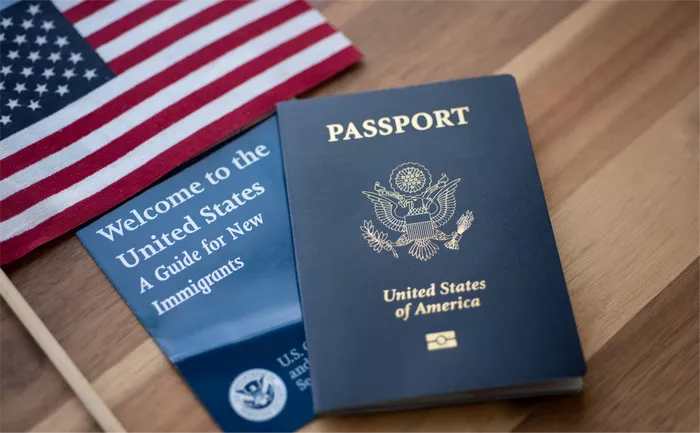The United States of America, often regarded as the land of opportunity, has long attracted individuals from diverse backgrounds seeking a better life. Among the various pathways to legal immigration, the Diversity Visa Program stands out as a unique initiative aimed at promoting diversity among immigrants to the United States. Commonly referred to as the Diversity Visa Lottery, this program offers a chance for individuals from countries with historically low rates of immigration to the U.S. to obtain lawful permanent resident status, commonly known as a green card. In this comprehensive guide, we delve into the intricacies of the Diversity Visa Program, exploring its origins, eligibility criteria, application process, and impact on immigration to the USA.
Origins of the Diversity Visa Program
The Diversity Visa Program traces its roots back to the Immigration Act of 1990, a landmark piece of legislation that aimed to overhaul the U.S. immigration system. One of the key provisions of this act was the creation of the Diversity Immigrant Visa category, designed to diversify the immigrant population by providing visas to individuals from countries with historically low rates of immigration to the United States. The program was officially launched in 1995, and since then, it has provided thousands of individuals with the opportunity to pursue their American dream.
Eligibility Criteria
To participate in the Diversity Visa Program, individuals must meet certain eligibility criteria outlined by the U.S. Department of State. One of the primary requirements is being a native of a qualifying country. The list of eligible countries is updated annually, and it typically includes nations with low rates of immigration to the United States. Additionally, applicants must have at least a high school education or its equivalent, or they must have at least two years of qualifying work experience within the past five years.
It’s important to note that meeting these basic eligibility requirements does not guarantee selection in the Diversity Visa Lottery. Each year, millions of individuals from around the world apply for a chance to obtain a diversity visa, but only a limited number of visas are available, making the selection process highly competitive.
Application Process
The application process for the Diversity Visa Program is entirely electronic and typically takes place once a year. The exact dates for the application period are announced by the U.S. Department of State, and interested individuals must submit their applications online through the official Diversity Visa Program website.
The application itself is relatively straightforward and requires basic personal information, including name, date of birth, country of birth, and education or work experience. Applicants are also required to submit a recent photograph that meets the specifications outlined by the Department of State.
Once the application period closes, a computer-generated random lottery is conducted to select individuals for further processing. Selected applicants are notified via the online Entrant Status Check portal, and they are provided with instructions on how to proceed with their visa application.
Visa Interview and Approval
Being selected in the Diversity Visa Lottery is just the first step in the immigration process. Selected applicants must undergo a series of additional steps, including a visa interview at a U.S. embassy or consulate in their home country. During the interview, consular officers assess the applicant’s eligibility for a diversity visa and determine whether they meet the requirements for lawful permanent resident status in the United States.
Applicants are typically required to provide various documents during the interview, including a valid passport, birth certificate, and proof of education or work experience. Additionally, applicants must demonstrate that they have the financial means to support themselves in the United States and that they do not pose a security or health risk to the country.
If the consular officer determines that the applicant meets all the necessary requirements, they may approve the visa application, and the applicant will be issued a diversity visa. With this visa, the individual can then travel to the United States and apply for admission as a lawful permanent resident.
Impact on Immigration
The Diversity Visa Program plays a significant role in shaping the demographic landscape of the United States. By providing visas to individuals from countries with historically low rates of immigration, the program contributes to the diversity of the immigrant population and helps ensure that people from a wide range of backgrounds have the opportunity to pursue their American dream.
Critics of the program argue that it is susceptible to fraud and abuse and that it does not necessarily attract the most qualified immigrants to the United States. However, supporters counter that the program provides a vital lifeline to individuals who might not otherwise have the opportunity to immigrate to the United States through other channels.
In recent years, the Diversity Visa Program has come under scrutiny, with calls for reform and even proposals to eliminate it altogether. However, for many immigrants, particularly those from underrepresented regions of the world, the program remains a beacon of hope and opportunity.
Conclusion
The Diversity Visa Program stands as a testament to the United States’ commitment to diversity and inclusivity in its immigration policies. By providing visas to individuals from countries with historically low rates of immigration, the program opens doors for people from diverse backgrounds to build a new life in the United States.
While the program is not without its challenges and controversies, its impact on immigration to the United States cannot be overstated. For thousands of individuals each year, the Diversity Visa Program represents a chance to turn their dreams of living and working in America into reality.
As the United States continues to grapple with issues of immigration and diversity, the Diversity Visa Program remains a symbol of opportunity and hope for people around the world. Whether it will endure in its current form or undergo significant changes in the future remains to be seen, but its legacy as a pathway to the American dream is undeniable.


